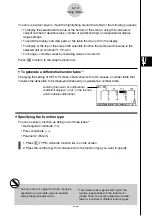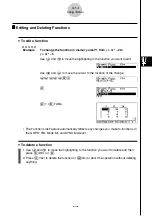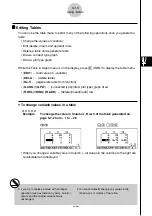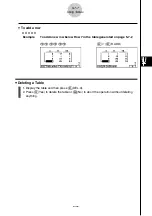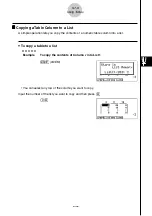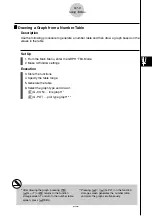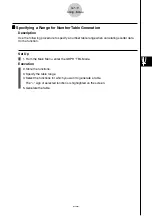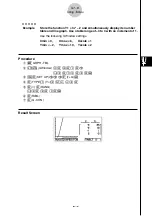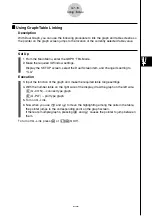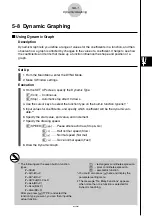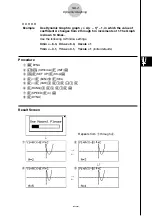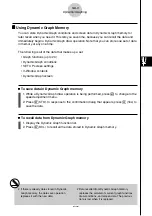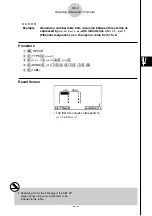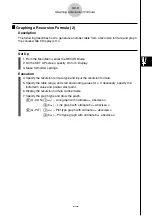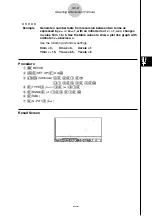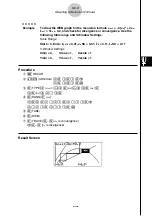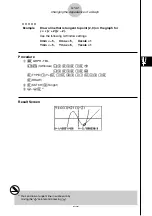
19990401
5-8 Dynamic Graphing
k
k
k
k
k
Using Dynamic Graph
Description
Dynamic Graph lets you define a range of values for the coefficients in a function, and then
observe how a graph is affected by changes in the value of a coefficient. It helps to see how
the coefficients and terms that make up a function influence the shape and position of a
graph.
Set Up
1. From the Main Menu, enter the DYNA Mode.
2. Make V-Window settings.
Execution
3. On the SET UP screen, specify the Dynamic Type.
1
(Cont) ... Continuous
2
(Stop) ... Automatic stop after 10 draws
4. Use the cursor keys to select the function type on the built-in function type list.*
1
5. Input values for coefficients, and specify which coefficient will be the dynamic vari-
able.*
2
6. Specify the start value, end value, and increment.
7. Specify the drawing speed.
3
(SPEED)
1
(
) ..... Pause after each draw (Stop & Go)
2
( ) ....... Half normal speed (Slow)
3
( ) ....... Normal speed (Normal)
4
(
) ...... Twice normal speed (Fast)
8. Draw the Dynamic Graph.
5-8-1
Dynamic Graphing
*
1
The following are the seven built-in function
types.
•Y=AX+B
•Y=A(X–B)
2
+C
•Y=AX
2
+BX+C
•Y=AX^3+BX
2
+CX+D
•Y=Asin(BX+C)
•Y=Acos(BX+C)
•Y=Atan(BX+C)
After you press
3
(TYPE) and select the
function type you want, you can then input the
actual function.
b
... rectangular coordinate expression
c
... polar coordinate expression
d
... parametric function
*
2
You could also press
w
here and display the
parameter setting menu.
# The message “Too Many Functions” appears
when more than one function is selected for
Dynamic Graphing.

